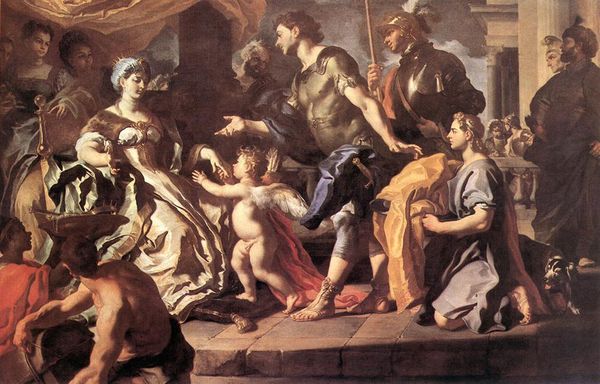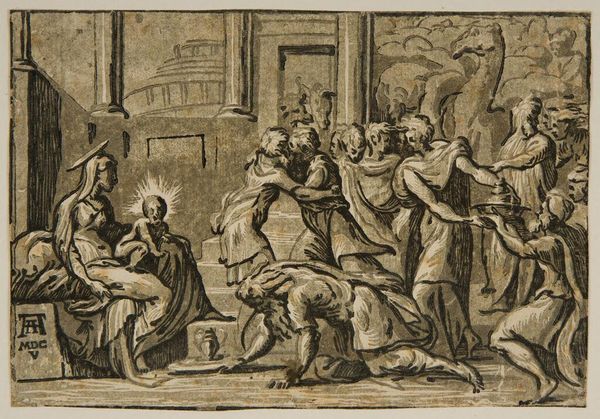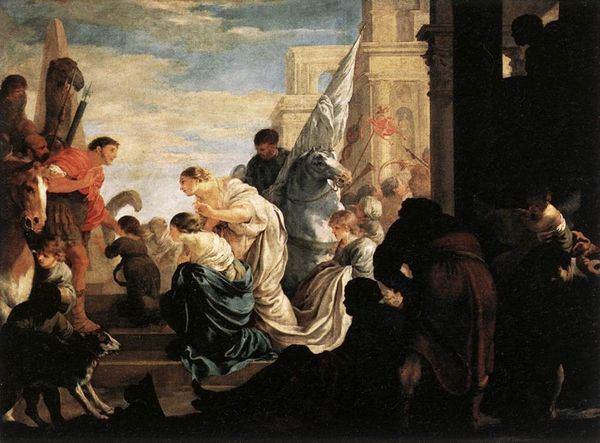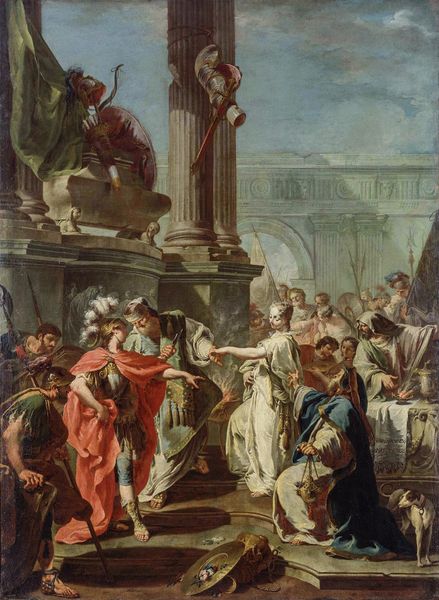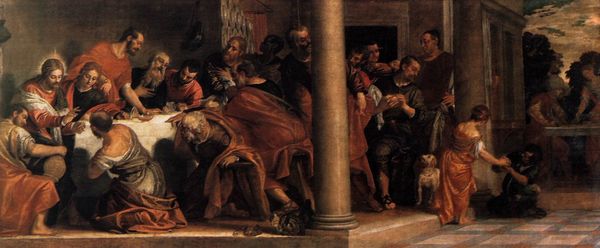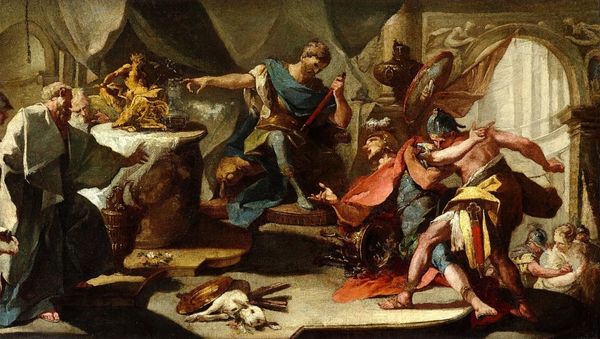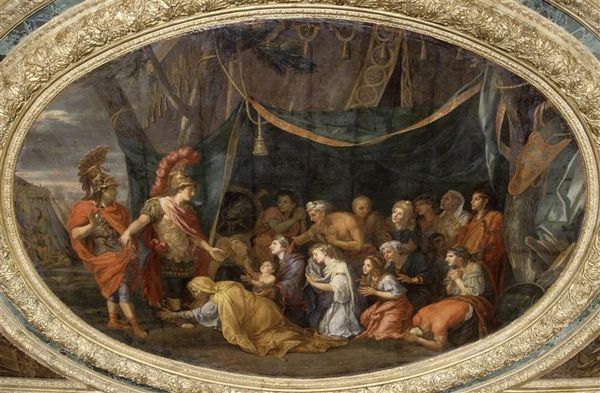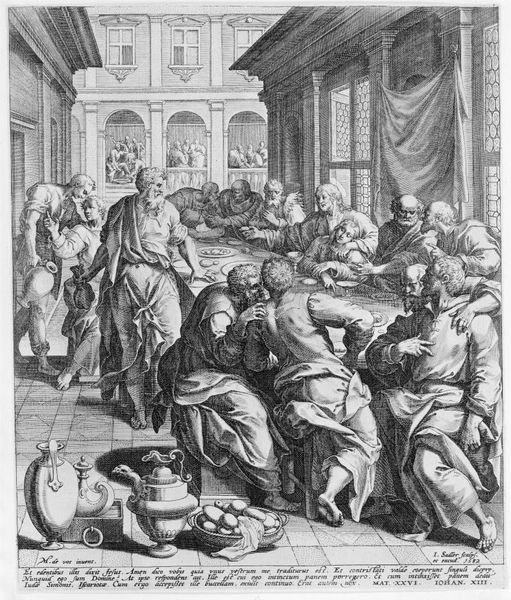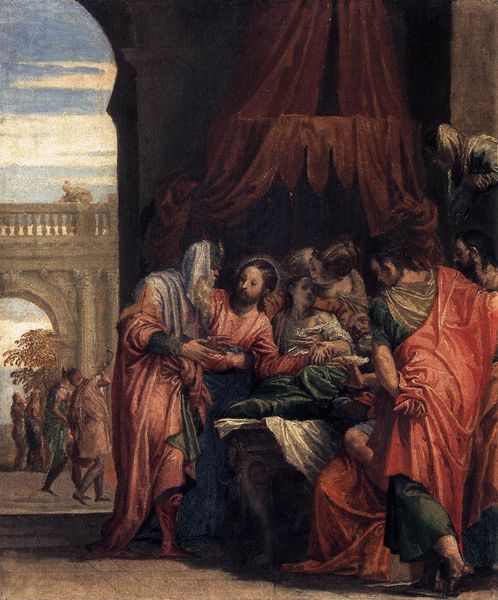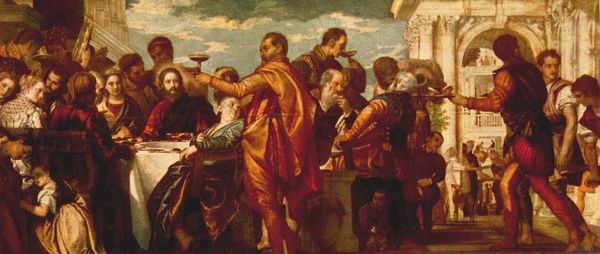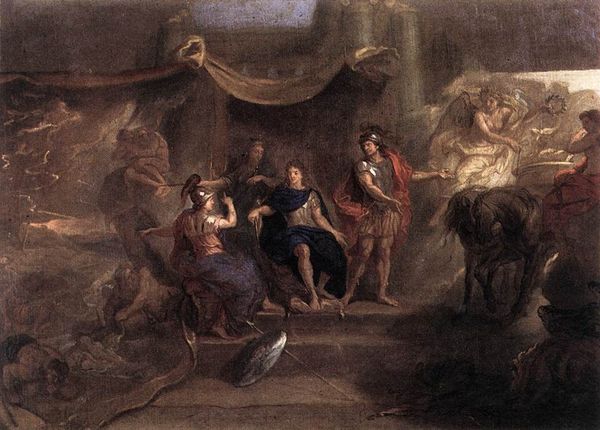
painting, oil-paint
#
narrative-art
#
baroque
#
painting
#
oil-paint
#
figuration
#
oil painting
#
mythology
#
painting painterly
#
history-painting
#
italian-renaissance
Copyright: Public domain
Curator: Welcome. Before us hangs *The Continence of Scipio*. The piece is ascribed to Giovanni Battista Gaulli. A baroque history painting rendered, of course, in oil. Editor: What strikes me immediately is how *busy* it is. A flurry of arms and gestures—everyone's got something to say, a story to tell. A high drama frozen in amber... or, well, oil. Curator: Indeed. Compositionally, Gaulli constructs a sophisticated interplay of gazes and gestures. Note how Scipio, elevated, directs our eye, while the surrounding figures react—each face a study in conflicting emotions. The architecture serves to both frame and compress the scene, enhancing its theatrical intensity. Editor: There's something about the light, too. It pools and glows on certain figures—Scipio, naturally, but also on that woman kneeling before him, radiating a kind of vulnerable grace. It’s almost like Gaulli is stage-lighting his characters for maximum impact. I wonder about that. Is she pleading for mercy, or something else entirely? Curator: The subject, as you may know, is the story of Scipio Africanus, the Roman general famed for his integrity. He is shown here refusing to accept a beautiful captive woman offered to him as spoils of war, returning her instead to her fiancé. It's a demonstration of Roman virtue, emphasizing *clementia* and *fides*. Editor: Ah, virtue signalling, even back then. But in a weird way, the emotional intensity actually pulls me in. Like a baroque soap opera. Is it historically accurate? Probably not. But does it *feel* like a heightened moment of moral reckoning? Absolutely. It almost veers into the operatic—in fact, the exaggerated grief over to the left and their, uh, enthusiasm in writhing really works as satire in that light... Maybe Scipio's stoicism is the anomaly here? Curator: You intuit a point worth noting. This painting uses color thematically: the warm reds and golds surrounding Scipio denote his power and moral fortitude, whereas the cooler greens and muted tones highlight the emotional turmoil of those around him, and it underscores the Renaissance emphasis on visual symbols as narrative tools. Editor: Well, seeing that clash between power and turmoil, as captured in strokes of pigment—is a good lesson in Baroque excess that has me looking twice. Not at Scipio and his noble intentions so much as the emotional maelstrom of everyone else that makes this scene interesting. Curator: It offers, then, a rich, dense study not only in moral fortitude but also in the language of baroque emotion. A glimpse of the theatricality of virtue.
Comments
No comments
Be the first to comment and join the conversation on the ultimate creative platform.
